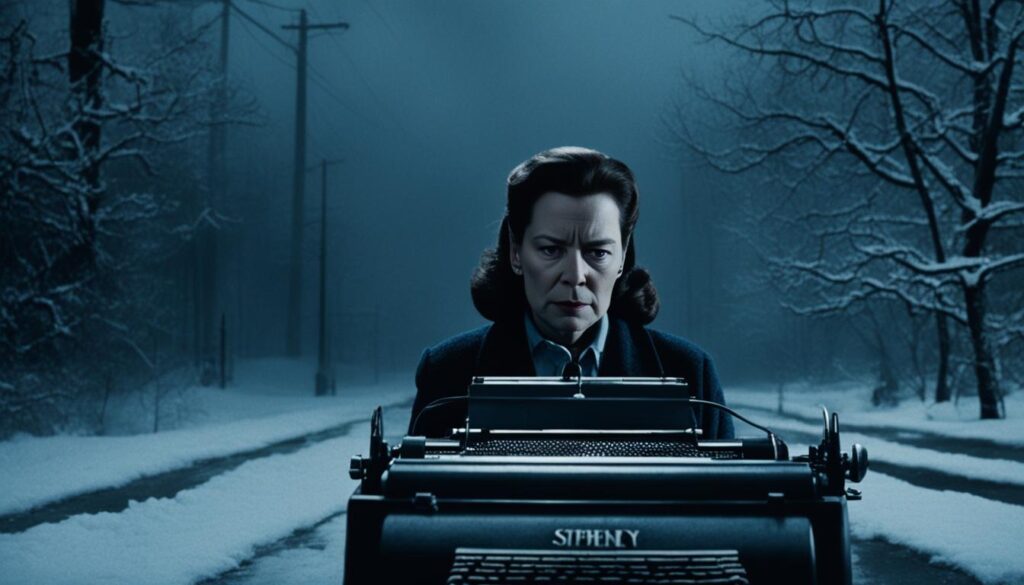In this section, we will provide a detailed summary and analysis of the renowned suspense novel, “Misery,” written by best-selling author Stephen King. The book depicts the unsettling story of a captive writer, and his captor’s obsession. With intricate plotlines and nuanced character development, Misery is a gripping tale that has enthralled readers since its release.
Join us as we explore the dark and twisted world of “Misery,” analyzing the book’s most significant themes and characters while uncovering its deeper meanings. Our thorough summary and analysis will give you a better understanding of what makes this book a true masterpiece of suspense and horror. Stay tuned for a compelling overview of the novel, a detailed plot summary, and an insightful analysis of the book’s themes and characters.
Overview of “Misery” by Stephen King
Stephen King’s “Misery” is a psychological horror novel that follows the story of popular writer Paul Sheldon, who is held captive by his “number one fan” Annie Wilkes after being rescued by her following a car crash. The story unfolds in the secluded and snowy Colorado town of Sidewinder.
The novel was first published in 1987 and has since become a cult classic that continues to captivate audiences with its suspenseful storyline and complex characters.
Main Characters
The main characters in Misery are Paul Sheldon, Annie Wilkes, and Sheriff John T. “Buster” Friendly. Paul Sheldon is the protagonist and a successful author who is famous for his romance novels. Annie Wilkes is Paul’s number one fan who becomes his captor after rescuing him. Sheriff Buster Friendly is the town sheriff who is responsible for investigating the disappearance of Paul Sheldon.
Basic Premise of the Story
The basic premise of the story is the complex relationship between Paul Sheldon and Annie Wilkes. Annie is a deeply disturbed woman who grows increasingly obsessed with Paul and his character Misery Chastain. Despite Paul’s attempts to escape, he finds himself trapped in Annie’s cabin, where he is subjected to psychological torture and physically harm. The story remains a classic depiction of the limits of obsession and the power dynamics between captor and captive.
Plot Summary of “Misery” by Stephen King
Paul Sheldon, a famous author, crashes his car in a snowy Colorado town called Sidewinder. Annie Wilkes, his “number one fan,” rescues him and brings him to her secluded cabin. As she nurses him back to health, Annie reveals her obsession with the character Misery Chastain, which Paul had killed off in his latest novel. Out of desperation to stay alive, Paul agrees to rewrite Misery’s story and bring her back to life.
As Paul continues to write, he discovers the terrifying depths of Annie’s madness and obsession. She punishes him for attempting to escape, and Paul finds himself trapped, alone, and at her mercy. Meanwhile, the town sheriff and Paul’s literary agent search for him, unaware of the danger he is in.
The novel reaches an intense climax with a bloody struggle for survival. Paul must find a way to outsmart Annie and escape in order to save his life.

Analysis of Themes and Characters in “Misery” by Stephen King
Stephen King’s “Misery” presents readers with a captivating story of obsession, isolation, and the human psyche. The book explores various themes, including mental illness, the duality of human nature, and the consequences of one’s actions.
The Psychological Aspects
The plot of “Misery” is driven by the psychological aspects of the two main characters. Annie Wilkes, the antagonist and protagonist Paul Sheldon’s caretaker, suffers from severe mental illness, which drives her obsession with Paul’s writing. Her character highlights the dangers of untreated mental illness and the toll it can take on the individual and those around them.
Character Development
The protagonist, Paul Sheldon, experiences a significant transformation throughout the book. His initial façade of a successful writer is stripped away as he confronts the reality of his situation. His character development shows a shift from a position of power to that of vulnerability, as he is forced to rely on his captor for survival.
The Overall Message
Stephen King uses “Misery” to convey a powerful message about the consequences of one’s actions. The book highlights the impact of obsession and its potential to lead to disturbing and dangerous behaviors. King portrays the human psyche in its most visceral form, emphasizing the complexity of human nature with its fragility and strength, light and darkness.
In conclusion, “Misery” is a testament to Stephen King’s skillful storytelling. In this book, he successfully weaves a tale that explores various themes, including mental illness, character development, and the consequence of actions. It is a chilling glimpse into the human psyche and a must-read for anyone interested in exploring the darker aspects of the human condition.
Critical Reception of “Misery” by Stephen King
“Misery” by Stephen King received critical acclaim upon its release in 1987. The novel was a commercial success, selling over 5 million copies in the United States alone. Critics praised King’s captivating storytelling and the masterful way he portrayed the characters and their psychological states.
The book won the 1988 Bram Stoker Award for Best Novel and was later adapted into a successful film starring Kathy Bates and James Caan. The film received widespread critical acclaim and earned Bates an Academy Award for Best Actress.
Over the years, “Misery” has become a revered classic in the horror genre. King’s ability to craft a story that is both terrifying and thought-provoking has solidified his status as one of the greatest horror writers of our time. His impact on the literary world is immeasurable, and “Misery” remains a shining example of his literary prowess.



